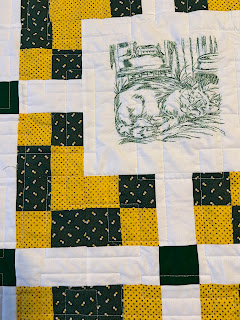The Jacket
– Getting Started
A new year and the start of a new BIG project. My husband asked for a new double-breasted blazer. I made three jackets back in the last millennium but it’s been years and a refresh seemed like a good idea. I started by looking for a new pattern but the best I could find, I already owned – Vogue 2257 American Designer – Calvin Klein from 1979. Ok, but there must be new books. Nope, the recommended book is still Simplicity Sewing for Men and Boys from 1973. I had used this as my guide with good results, so ok. In 2022, however, there are multiple YouTube videos on tailoring. The ones I like a lot and found very informative are from Bias Bespoke which is a tailoring group in New York City. They also sell everything (and I do mean everything) needed to tailor a jacket (http://www.biasbespoke.com/).
We found the outer fabric at Fabrications last summer – 2.5 yards of 100% wool suiting in dark gray and tan heather which has been sitting in the bag with the rest of the fabric I bought. The jacket needs more than outer fabric. Lining, buttons and thread but also four types of interfacing, should pad, sleeve heads and tape. I think that’s all.
So, this is what I purchased to get started in addition to the wool suiting:
- TC-212 hymo canvas - medium to light weight;
cotton, wool, polyester, and viscose
- TC-1186 hymo (hair) canvas - medium weight;
cotton, animal hair, and polyester
- Domette - a thin batting to cover the hymo and horsehair; 100% polyester
- BIAGI lightweight Italian cotton interlining for the jacket back
- Ready-made undercollar - wool & viscose felt, backed with pure linen canvas on the bias, and sewn together with cotton thread
- Premium Italian shoulder pads – black; 1/2" (12mm) thick
- 100% cotton edge tape – black, wove cotton tape for along edges or other places that need to be stabilized, such as the roll line of a coat's lapel.
- DECIUS viscose-acetate Jacquard Roman-look lining; purple slate
- Refined black Buffalo horn suit buttons - 30 Line (~19.7mm, ~13/16")
- TORRE 100% Cotton Basting Thread for temporarily basting garments together by hand. The toothy thread stays in place and pulls out easily.
Now I have everything I need to get started (or I hope). Before cutting into all this lovey fabric, I thought I should check the pattern fit. I had made a muslin when I first made the jacket and digging in the back of the sewing closet, there it was. A little dusty but still clearly showing all the fitting marks. It needed a little tweaking and I think the fit is good. The pattern is vintage and well used – meaning it’s fragile. The next step will be to copy it on to Pattern Ease fabric. Patterns for lined garments often use the same pattern pieces for both the outer fabric and lining. I am going to copy separate pieces for outer, lining and interfacing. That way, I won’t have to move pattern pieces around and forget critical markings, like darts.
The picture below shows the pattern. I will show pictures of the outer fabric, lining and buttons at a later date. There will be more to come, once construction is started.
*This article was written by Sandy Herman. She was treasurer for our organization for several years and now coordinates both the Skein Gang and the Sew Social neighborhood groups.
· |



Tailoring has always intimidated me, and so I have never tried it. I look forward to following your progress and hearing your thoughts!
ReplyDelete